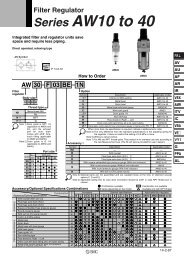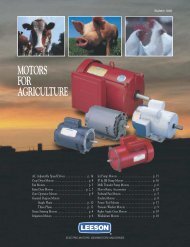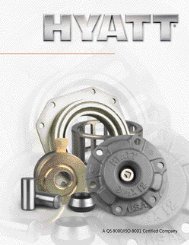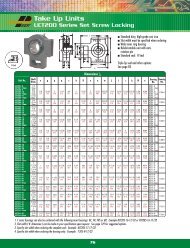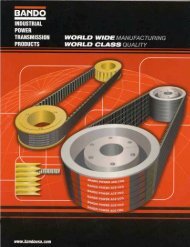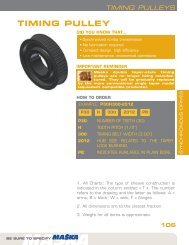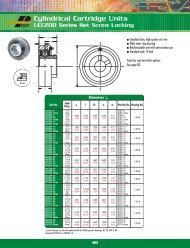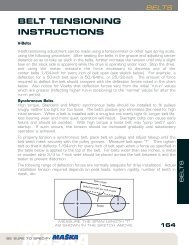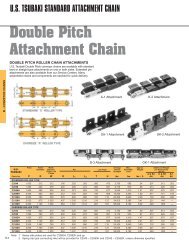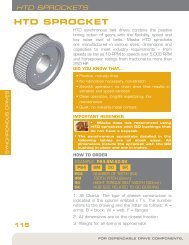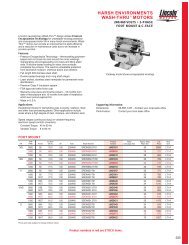Platinum Belt Design Manual - Jason Industrial
Platinum Belt Design Manual - Jason Industrial
Platinum Belt Design Manual - Jason Industrial
You also want an ePaper? Increase the reach of your titles
YUMPU automatically turns print PDFs into web optimized ePapers that Google loves.
POWERING GLOBAL INDUSTRY<br />
DRIVE CALCULATION<br />
PROCEDURE<br />
STEP 4 - DETERMINE THE BELT WIDTH NEEDED<br />
a) Basic Performance P a<br />
Using the pulley and belt combination from Step 3, proceed to the Basic Horsepower rating table<br />
for the chosen belt pitch (pages 60 through 77). Select an initial desired width and enter the<br />
corresponding table to find a value at the intersection of the fastest pulley and its RPM. This value is<br />
the Basic Performance P a<br />
b) Calculation of KZ factor - Teeth in Mesh Correction Factor<br />
Power ratings listed in this handbook are based on a minimum of six teeth in mesh between the belt<br />
and the pulley. The ratings must be corrected for excessive tooth loading if there are less than six<br />
teeth in mesh. This is particularly important for drives having high speed ratios and short center<br />
distances. To determine the number of teeth in mesh on the smaller pulley you can use the following<br />
formula:<br />
(D p –d p )<br />
Z t = [ 0.5 - ] x Z<br />
6C<br />
1<br />
Where:<br />
Z t = Number of teeth in mesh<br />
C = Center distance<br />
(in)<br />
D p = Pitch Diameter of large pulley (in)<br />
d p = Pitch Diameter of small pulley (in)<br />
Z 1 = Number of teeth on small pulley<br />
If Z t is greater than 6, then K z = 1<br />
If Z t is less than 6, then the value of K z is found in Table 4 - teeth in mesh correction factors.<br />
c) Calculation of KL factor - <strong>Belt</strong> Length Correction Factors<br />
The power ratings listed in this manual are based on specific belt lengths. These ratings must be<br />
corrected for any belt longer or shorter than the base length. The correction factor K L can be<br />
determined using Table 5 - belt length correction factor.<br />
d) Verify Actual Power Rating<br />
Use Formula 5 below to determine the Actual Power Rating (P ba ) for the trial belt width chosen in<br />
Step 4a.<br />
P ba = P a x K z x K L [5]<br />
Where:<br />
P ba = Actual power rating (hp)<br />
P a = Basic performance (hp)<br />
K z = teeth in mesh correction factor<br />
K L = belt length correction factor<br />
Compare the Actual Power Rating (P ba ) to the <strong>Design</strong> Power (P d ). If the Actual Power Rating is<br />
greater than or equal to the <strong>Design</strong> Power, use the belt width chosen. Otherwise, test the next<br />
standard width until P ba > P d<br />
NOTE: At this point it is advisable to confirm that the pulley combination chosen is available in the<br />
width determined above. Use the pulley dimension tables (pages 80 through 85).<br />
12



